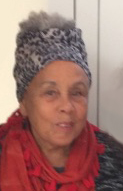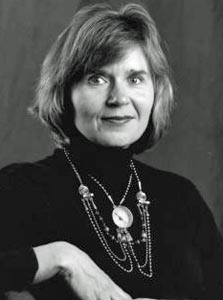Related Research Articles

Beverly Buchanan was an African-American artist whose works include painting, sculpture, video, and land art. Buchanan is noted for her exploration of Southern vernacular architecture through her art.

Environmental art is a range of artistic practices encompassing both historical approaches to nature in art and more recent ecological and politically motivated types of works. Environmental art has evolved away from formal concerns, for example monumental earthworks using earth as a sculptural material, towards a deeper relationship to systems, processes and phenomena in relationship to social concerns. Integrated social and ecological approaches developed as an ethical, restorative stance emerged in the 1990s. Over the past ten years environmental art has become a focal point of exhibitions around the world as the social and cultural aspects of climate change come to the forefront.

Betye Irene Saar is an African American artist known for her work in the medium of assemblage. Saar is a visual storyteller and an accomplished printmaker. Saar was a part of the Black Arts Movement in the 1970s, which engaged myths and stereotypes about race and femininity. Her work is considered highly political, as she challenged negative ideas about African Americans throughout her career; Saar is best known for her artwork that critiques American racism toward Black people.
New Village Press is a not-for-profit book publisher founded in 2005 in the San Francisco Bay Area now based in New York, New York. It began as a national publishing project of Architects/Designers/Planners for Social Responsibility (ADPSR), an educational non-profit organization founded in 1981.

Barbara DeGenevieve (1947–2014) was an American interdisciplinary artist who worked in photography, video, and performance. She lectured widely on her work and on subjects including human sexuality, gender, transsexuality, censorship, ethics, and pornography. Her writing on these subjects have been published in art, photographic, and scholarly journals, and her work has been exhibited internationally.
Zhi Lin is a Chinese American mixed-media artist, a native of Nanjing, China. While he was a graduate fellow at the University College London's Slade School in 1989, the political events and social movements around the world convinced him to use his artwork for social, history and cultural awareness, and "to engage political and social reforms in our society." Since that time his work has been a visual examination of the patterns of violence, intolerance, injustice, and complicity in public behavior."

Mary Caroline Richards was an American poet, potter, and writer best known for her book Centering: in Pottery, Poetry and the Person. Educated at Reed College, in Portland, Oregon, and at the University of California at Berkeley, she taught English at the Central Washington College of Education and the University of Chicago, but in 1945 became a faculty member of the experimental Black Mountain College in North Carolina where she continued to teach until the end of the summer session in 1951.
Gregory Euclide is an American contemporary artist and teacher who lives and works outside of Minneapolis, Minnesota.
Ecological art is an art genre and artistic practice that seeks to preserve, remediate and/or vitalize the life forms, resources and ecology of Earth. Ecological art practitioners do this by applying the principles of ecosystems to living species and their habitats throughout the lithosphere, atmosphere, biosphere, and hydrosphere, including wilderness, rural, suburban and urban locations. Ecological art is a distinct genre from Environmental art in that it involves functional ecological systems-restoration, as well as socially engaged, activist, community-based interventions. Ecological art also addresses politics, culture, economics, ethics and aesthetics as they impact the conditions of ecosystems. Ecological art practitioners include artists, scientists, philosophers and activists who often collaborate on restoration, remediation and public awareness projects.
Julie Speidel is a sculptor from Seattle, Washington. She is the daughter of author Bill Speidel and stepdaughter of oceanographer Robert S. Dietz. She is also part owner of the Seattle Underground tours company, Bill Speidel Enterprises.

Nancy Lee Worden was an American artist and metalsmith. Her jewelry art is known for weaving together personal narratives with current politics. She received many awards and honors. Worden exhibited internationally, and her work is represented in collections around the world, including the Smithsonian American Art Museum and the Museum of Fine Arts, Boston.

Bonnie Ora Sherk was an American landscape-space artist, performance artist, landscape planner, and educator. She was the founder of The Farm, and A Living Library. Sherk was a professional artist who exhibited her work in museums and galleries around the world. Her work has also been published in art books, journals, and magazines. Her work is considered a pioneering contribution to Eco Art.

Stephanie Deshpande is a contemporary American painter, best known for her portraits and narrative paintings. She currently lives in northern New Jersey.
Jo Hanson (1918–2007) was an American environmental artist and activist. She lived in San Francisco, California. She was known for using urban trash to create works of art.
Stephanie Anne Johnson is an American mixed media artist. Many of her works are site-specific, open-air art installation pieces.
Myra Mimlitsch-Gray is an American metalsmith, artist, critic, and educator living and working in Stone Ridge, New York. Mimlitsch-Gray's work has been shown nationally at such venues as the John Michael Kohler Arts Center, Museum of the City of New York, Metropolitan Museum of Art, Cooper-Hewitt Smithsonian Design Museum, and Museum of Arts and Design. Her work has shown internationally at such venues as the Middlesbrough Institute of Modern Art, Stadtisches Museum Gottingen, and the Victoria and Albert Museum, and is held in public and private collections in the U.S, Europe, and Asia.
Linda Threadgill is an American artist whose primary emphasis is metalsmithing. Her metal work is inspired by forms of nature and the interpretations she gleans from the intricate patterns it presents. She explores the foundation of nature to allude to nature and transform it into re-imagined, stylized plants forms.
C. Davida Ingram is a conceptual artist specializing in gender, race and social practice. Her art explores desire, space, time and memory, while questioning 21st century black female subjectivity. She is also a public speaker and civic leader. She received the 2014 Stranger Genius Award in Visual Arts. In 2016 she was a Kennedy Center Citizen Art Fellow, a finalist for the 2016 Neddy Arts Award, and 2018 Jacob Lawrence Fellow. Ingram, along with Prometheus Brown of Blue Scholars, and Tony-nominated choreographer and director, Donald Byrd at the 2016 Crosscut Arts Salon: The Color of Race. In 2017 she was featured in Seattle Magazine's Most Influential Seattleites of 2017. In the same year she received the Mona Marita Dingus Award for Innovative Media.

Anna Mlasowsky is a German artist. She is known for her experimental and boundary pushing work in glass and is recognized as one of the leading female artist working in glass today.
Art Hansen was an American artist from Vashon Island. Hansen was a native Washingtonian and achieved art degrees from the University of Washington and University of Minnesota.
References
- ↑ Naidus, Beverly (2009). Arts for Change. New Village Press. ISBN 978-0981559308.
- ↑ "Book Reviews | JCES - The University of Alabama". jces.ua.edu. Retrieved 2016-08-29.
- ↑ "Arts for Change, Teaching Outside the Frame". www.newvillagepress.net. Archived from the original on 2016-06-24. Retrieved 2016-06-11.
- ↑ "Book Review - Arts for Change: Teaching Outside the Frame". wayback.archive-it.org. Archived from the original on 2010-09-06. Retrieved 2016-08-29.
{{cite web}}: CS1 maint: bot: original URL status unknown (link) - ↑ "Eco-Art for Everyday Life". earthdance.phpwebhosting.com. Retrieved 2016-06-11.
- ↑ "Social Ecologist Profile: Beverly Naidus of Vashon Island, WA USA | Institute for Social Ecology". Institute for Social Ecology. 2011-02-23. Retrieved 2016-06-11.
- ↑ "Naidus Beverly CV 2014" (PDF). tacoma.uw.edu. Retrieved 14 March 2024.
- ↑ "New Museum - Digital Archive". archive.newmuseum.org. Retrieved 2016-08-29.
- ↑ Brenson, Michael (2002). "Can Political Passion Inspire Great Art?". In D. J. R. Bruckner (ed.). The New York Times Guide to the Arts of the 20th Century: 1900-1929. Taylor & Francis. pp. 2539–2542. ISBN 978-1-57958-290-6.
- 1 2 "Beverly Naidus - Women Eco Artists Dialog". Women Eco Artists Dialog. Archived from the original on 2014-02-21. Retrieved 2016-06-17.
- ↑ "bnaidus | Faculty & Staff Directory". directory.tacoma.uw.edu. Retrieved 2016-06-11.
- ↑ "Eden Reframed: Eco-art Meets Permaculture Design on Vashon Island". edenreframed.blogspot.com. Retrieved 2016-06-17.